Can You Solve the ‘Impossible’ Locked Room Killing of Joseph Elwell? (FPD CASE VAULT)
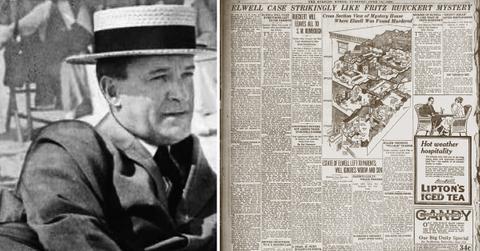
June 28 2024, Published 10:01 a.m. ET
In the world of detective fiction, there are many standards and tropes that have become synonymous with the genre. Perhaps most famous of these is the classic locked-room mystery, sometimes referred to as an "impossible crime."
The plot-line usually centers around a death that is clearly a case of murder but with no resolution seemingly possible through circumstances at the scene, often a room that is locked from the inside with no possible escape for a killer.
Originally dreamt up in the mind of the great Edgar Allen Poe, the genre has since been developed by the likes of Gaston Leroux, GK Chesterton, John Dickson Carr, and Edward D. Hoch.
However, these mysteries are not limited to the world of fantasy, and a century ago, a real such crime would write itself into the annals of the great American unknowns. Joseph Bowne Elwell, a bridge player, writer, and tutor, would find himself as the victim of a murder straight out of the pages of a classic page-turner.
Standing at the dawn of the "roaring 20s," its high society links and multiple suspects could almost have come from the pen of Agatha Christie. The locked house and a killer with nowhere to go would undoubtedly have been a test of any would-be Poirot or Miss Marple.
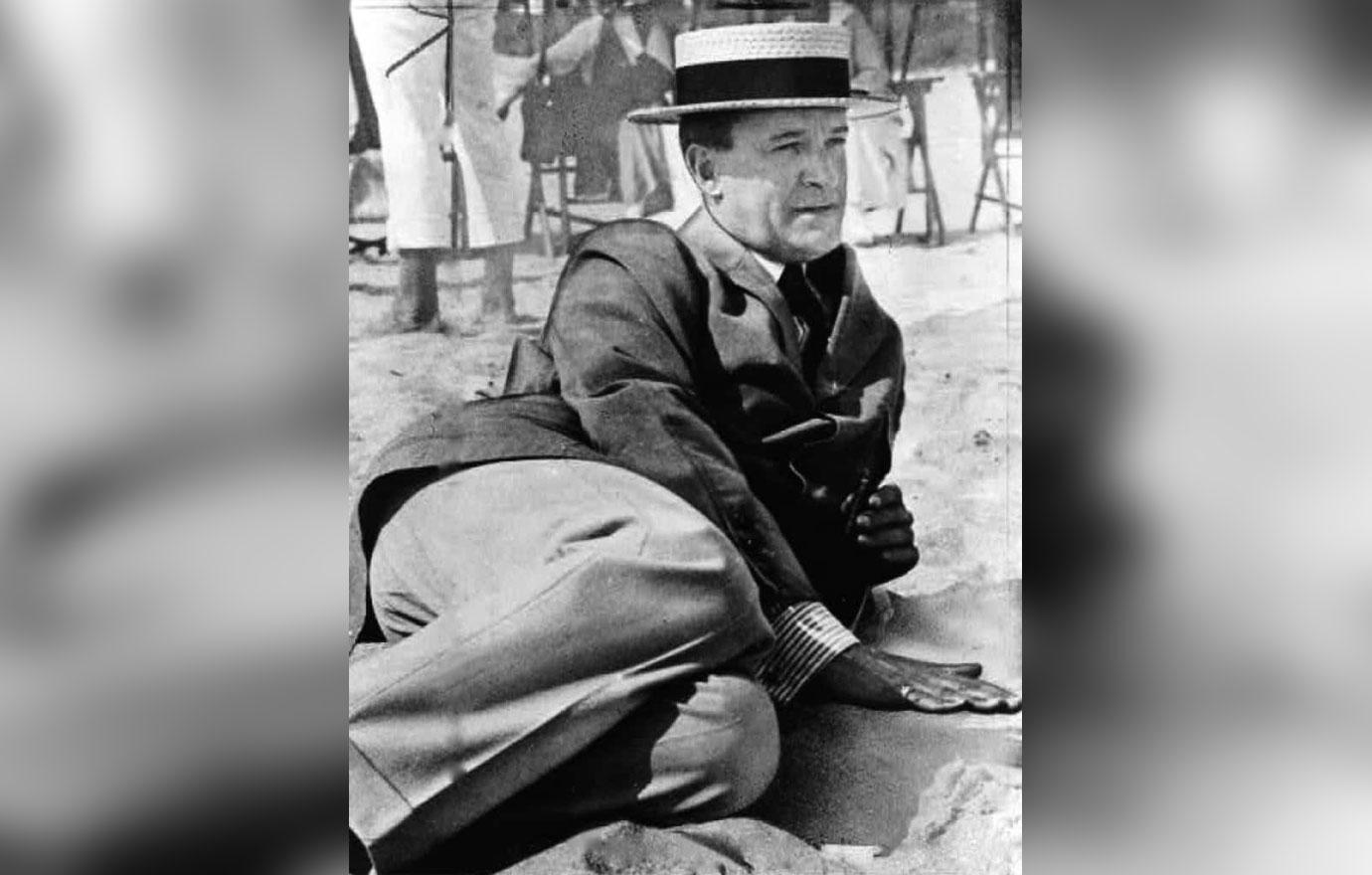
A care-free Joseph B. Elwell reclining on the Florida sands shortly before his murder in 1920.
Born in 1873 in Cranford, New Jersey, the victim was what we might call a social climber. He was known publicly as J.B. Elwell, born to a respectable lower-middle-class family. He was raised comfortably yet far from wealthy.
Early on, his eyes had turned toward a business career, becoming a hardware and insurance salesman in his teenage years. During this time, he discovered a natural aptitude for cards, becoming renowned for his abilities at the game of whist by the age of 18. Known as the "wizard of whist," Elwell would sometimes take home $1,000 a night from the game, depriving wealthy and well connected New Yorkers of their money.
However, despite becoming the scourge of Wall Street gamblers, his abilities failed to win him connections until his marriage to the respectable Helen Derby, whose cousin was married to Ethel Roosevelt, the youngest daughter of Theodore Roosevelt. The wedding was fueled by their mutual fascination with the then-new game of bridge.
Now known as bridge whist or straight bridge, the game was derived from whist and became popular in high society throughout the early 20th century. Elwell's talent for the game took him far, thanks in part to his wife's willingness to open the right doors for him. By the age of 30, "he" had written thirteen books on the subject. It is widely believed that it was, in fact, his wife who had written the books that had won him so many plaudits.
That is not to say Elwell himself didn't possess the talent to be in the position he found himself, being an undoubted bridge genius and deserving of his nickname as the "Bridge King of Manhattan." He was noted as a consistent winner across NYC's clubs, and with his partner, Harold Vanderbilt, he became widely recognized as one half of America's best bridge pairing of the 1910s and '20s.
His position and celebrity allowed his other avenues of income, investing heavily in the stock market and horse racing, owning 20 horses, five cars, a yacht, and a sizable fortune.
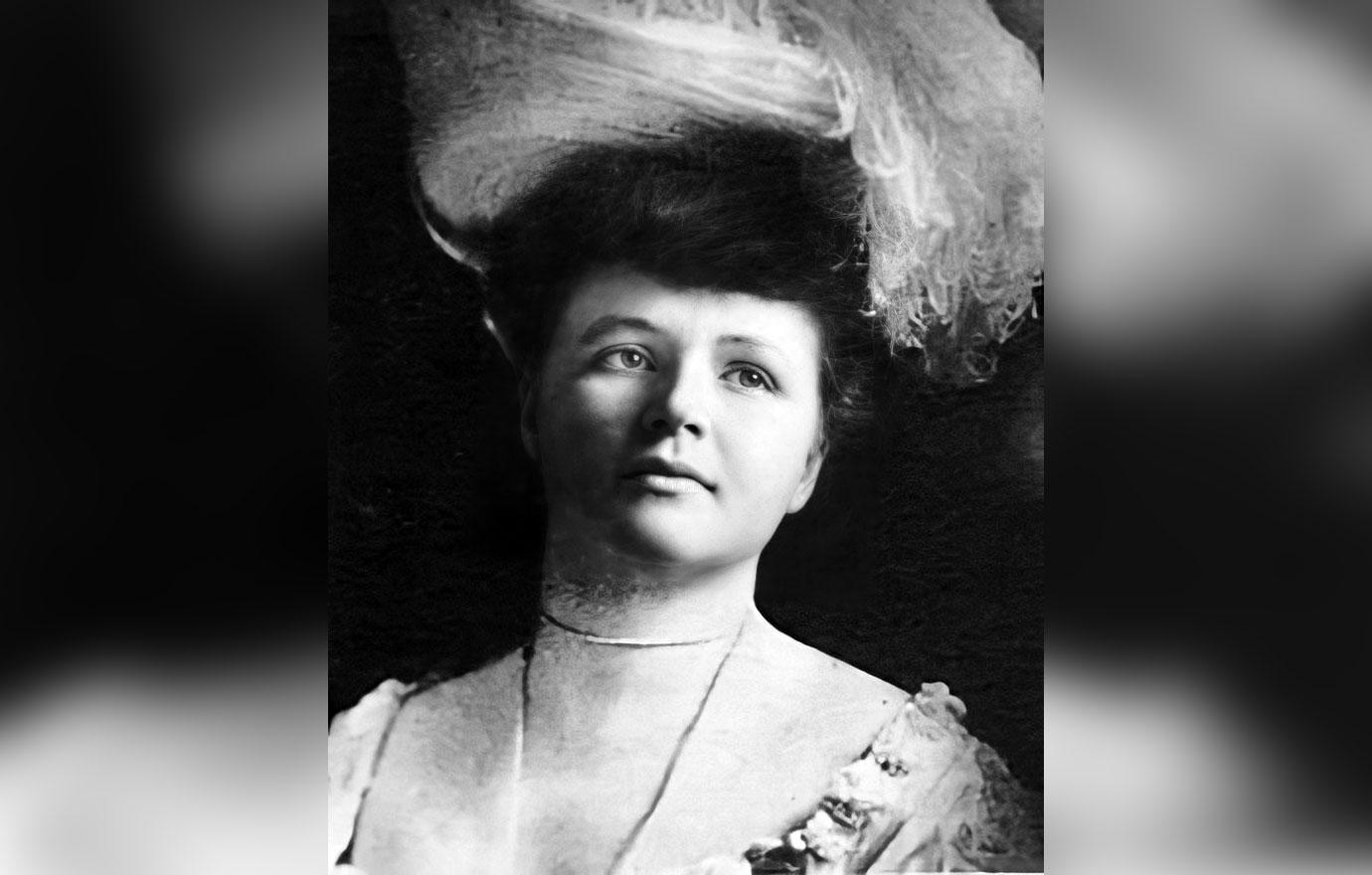
Helen Derby Ewell, wife of Joseph, had high-profile connections to the Roosevelt family.
However, with fame and position often comes vice. Elwell was no puritan, and was known to have had many affairs across New York, often with women either much younger than himself or married. Elwell's scandalous behavior had begun around the time of his son Richard's birth in 1905, with sources noting that he was shot at by a lover the year previously, possibly while his wife was pregnant.
By the time of his fame, his private life was the talk of the city and undoubtedly a source of great shame to his spouse and family. Despite this, Helen seemed content to allow his philandering so long as her husband paid for a house for their son and herself on Park Avenue following a separation in 1916.
This kind of behavior led to a list of enemies that would extend far beyond his own social circle, with fathers, husbands, and ex-lovers all vying for his blood. Known to have slept with at least 50 married women, some even place his number of sexual conquests as high as 1,000.
"He was a man who exercised a remarkable influence over women," said his friend L.H. Green. "He was cold-blooded to an extreme, which instead of repelling his friends of the opposite sex seemed to attract them all the more."
Yet, while Elwell had gained a reputation as a cad, there was no serious indication that he was under any threat of violence. There had been no reports of assaults or threats against his person and, similarly, no reports that anyone had threatened his life. Indeed, the philanderer seemed happy in his life, his affairs only increasing following his separation, with Elwell caring little for what anyone thought of him. That would all change on June 10, 1920.
It had been a hot summer's day in Manhattan, and Elwell decided to spend an enjoyable evening at the Ritz-Carlton on 46th Street and Madison Avenue, now a luxury co-op. Elwell was in the company of his latest love interest, the newly divorced Viola Kraus, and both were the guests of Mr. and Mrs. Walter Lewisham, Kraus' sister and brother-in-law.
Elwell and Kraus ate and drank before the party headed out into the city to attend Florenz Ziegfeld's Midnight Frolic show on the New Amsterdam Theatre's rooftop at 42nd Street.
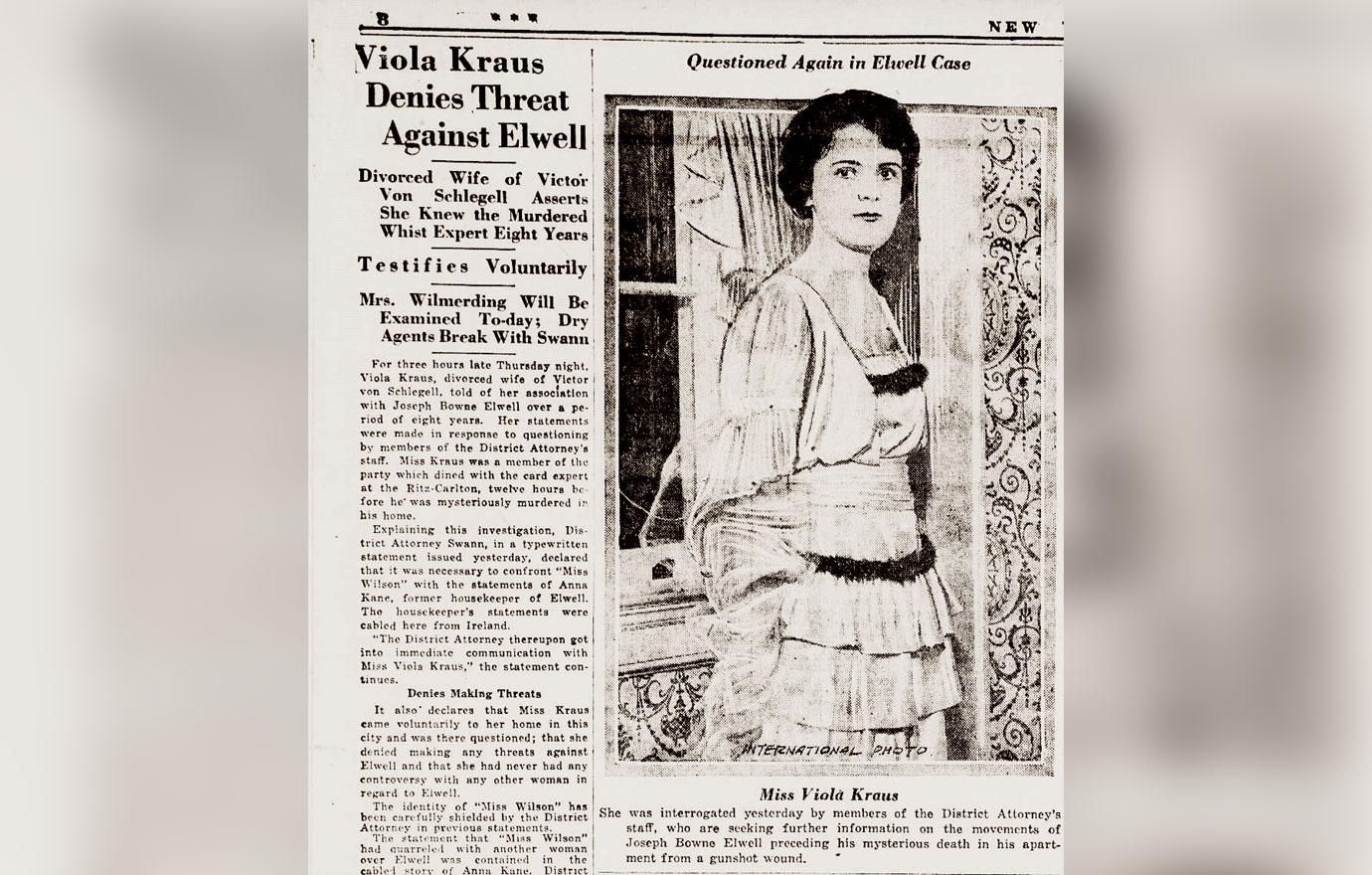
Viola Kraus attended a show with Ewell on the last night he was ever seen alive,.
Elwell left the New Amsterdam and went back to his West 70th Street home around 1:30am. Phone calls made to the property suggest he arrived home sometime between 2:04am and 2:30am when a call from Kraus connected.
Elwell was involved with more phone calls throughout the early hours, calling his stables in Far Rockaway at 4:30am. The hour is certainly unusual, and he got no reply.
Given the timing of the call, there might be some suggestion of urgency to the matter. He would make another call to a number in Garden City, New Jersey, and his last telephone interaction was noted to have occurred at 6:09 am.
At 6:30am, the milkman saw that the vestibule doors to the house were wide open when he made his delivery, yet everything seemed to be in order as Elwell was soon seen bringing in the mail and the newspaper from his doorstep. It would be the last time anyone saw the "Bridge King of Manhattan" alive.
Around 9 am, Marie Larsen, Elwell's Swedish housekeeper, unlocked the front door, ready to begin her usual cleaning and breakfast duties. She noted the vestibule doors were now closed as usual, and she had brought in the milk, Elwell seemingly having left it when he fetched his newspaper and mail. Nothing seemed amiss as she started dusting and polishing the impressive brownstone abode.
Entering the living room, Larsen noticed Elwell sitting in a chair. He didn't respond to her greeting, and as Larsen slowly approached, she was shocked by what she found.
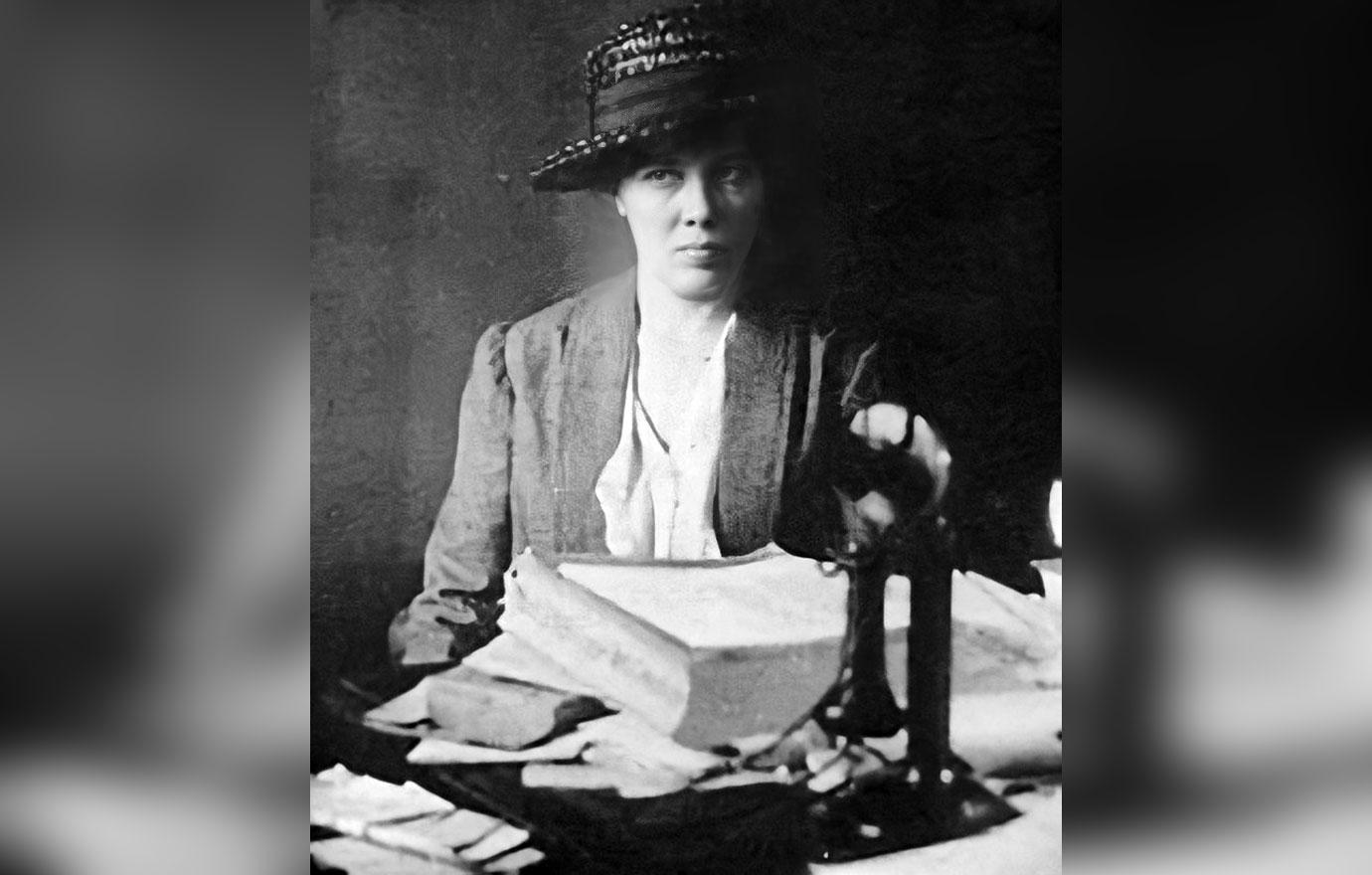
Housekeeper Marie Larsen discovered Elwell sitting in a chair at home, shot by a .45 automatic.
The man in the chair barely looked like J.B. Elwell at all. Wearing pajamas and with his newspaper folded on his lap, Elwell was devoid of both his wig and dentures, being both toothless and bald, an image far from the Lothario that had scandalized New York. More alarming, however, was the bullet hole in his forehead.
The bridge wizard had been shot by a .45 automatic and amazingly was still clinging to life. Marie Larsen immediately ran to raise the alarm, and he was rushed to Bellevue Hospital in the faint hope that he might yet live. Despite overcoming the odds at the bridge table, Elwell couldn't escape the inevitable and was pronounced dead a few hours later, never having spoken another word.
The killing was an immediate sensation, with the New York press descending on Elwell's Manhattan home and blanketing the newspapers throughout June and July. News of the killing reached Chicago and Los Angeles, the case becoming a national interest as speculation and details of Elwell's scandalous life enthralled readers across the country.
Such was the press furor that New York's bridge tables emptied, high society worrying what too much interest in their private lives may do for their reputations. Despite this, the lounges remained packed, and everyone seemingly had a theory or piece of gossip as to who may have done the deed.
Under pressure and scrutiny, the NYPD set to work at the crime scene. There was no sign of struggle in the living room, with Elwell seemingly having retrieved his newspaper and then his mail, settling into his chair where he was shot at point-blank range. Blood splatter analysis suggested this shot had come from right in front of Elwell, either from the hip or from a crouched individual rather than somebody standing and firing down at their seated victim.
Inside the room, police found a single bullet placed on the table in front of the deceased, with the cartridge located on the floor. There was no gun present, but it was ascertained to have been a .45 Colt pistol of the type issued to the army.

The news of Elwell's mysterious death rocked the nation, with many speculating on the circumstances.
A letter from Elwell's stable was found on the ground, covered in blood. A smoked cigar was also located nearby, Larsen identifying it as belonging to the deceased's personal mixture. A second cigar was found on the mantlepiece from a regular brand, suggesting that Elwell may have smoked with his killer before being shot.
The doors showed no evidence of tampering, and all the windows were firmly shut from the inside, secured with iron grills. There had been no reports of anyone going in or out of the property.
Dusting for fingerprints, police discovered that the only prints anywhere in the house were those of Marie Larsen and Joseph Elwell himself. Either the killer had been meticulous, or Marie Larsen herself was involved.
The police seemingly never took this possibility seriously, and there would have been little motive for the killing from the well-paid housekeeper. Equally, she would have had no reason to raise the alarm when her master had not yet expired.
"On the table at his side were several letters, one of which, from a racing associate, had been removed from the envelope," The Sacramento Union reported. "The letters had been delivered by the postman at 7:35. There was no weapon, no footprint, no evidence of a struggle, no possible clue except a large-caliber shell, such as is ejected from an automatic pistol of the army type, and the stub of a cigarette different from those Elwell habitually smoked."
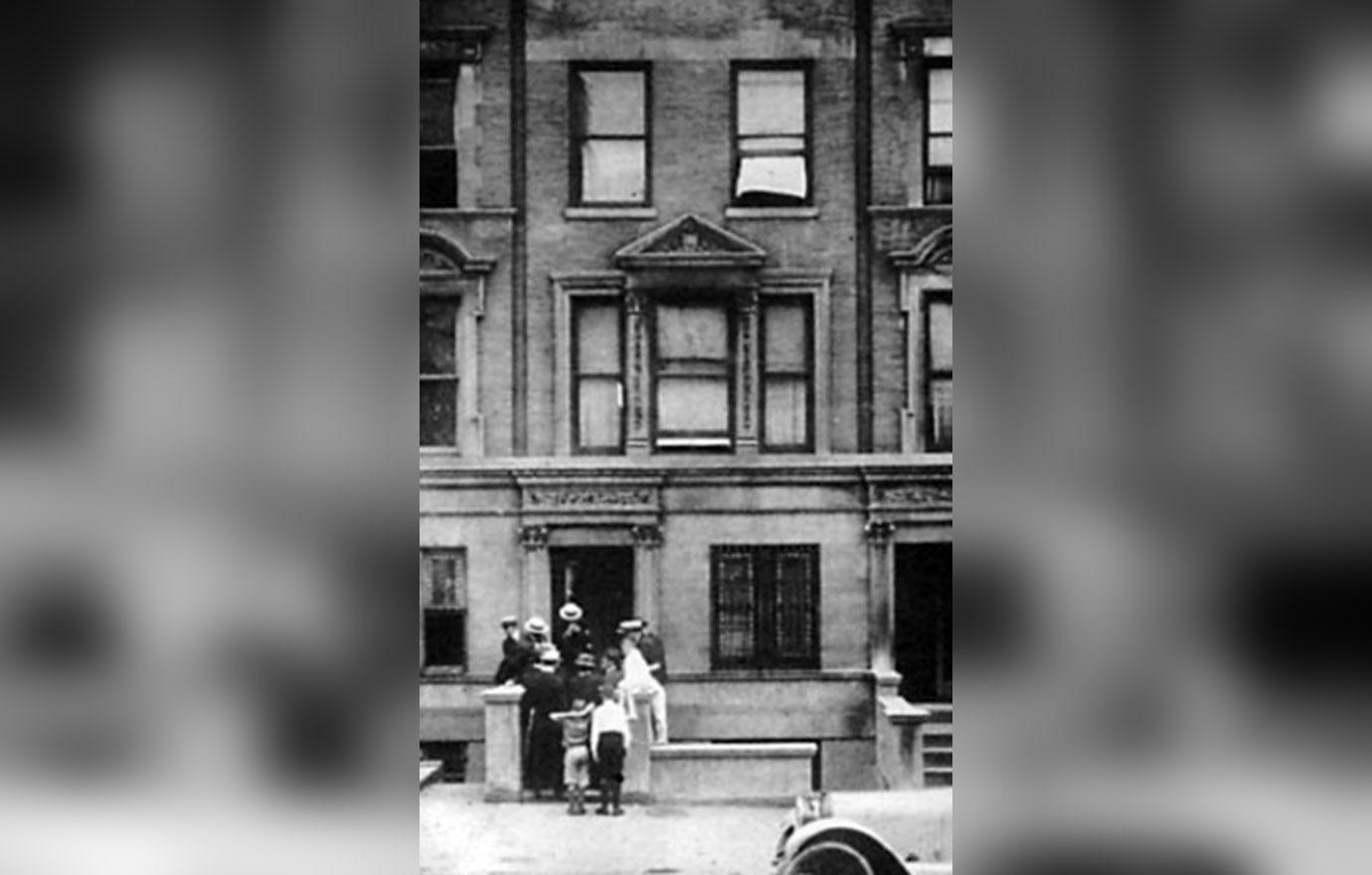
The Elwell brownstone on West 70th Street in New York City, the scene of the grisly crime.
Inside the house, Elwell's personal possessions remained untouched, with valuables such as cash, jewelry, and paintings remaining at the scene. Discounting robbery, the motive looked increasingly likely to be personal, with the victim knowing his killer. Investigating further, police discovered a vast collection of women's underwear that Elwell had seemingly taken as trophies from his sexual conquests.
Alongside his mementos, they found a list of fifty women he'd engaged in affairs with, each woman cataloged with her name, number, and personal notes.
Many of these women were rumored to have been given keys to the house while officially only Elwell and Larsen had access. Police began to work their way through the list of girlfriends and their own associates, including angry husbands and relatives. Elwell's former wife, Helen, was even under scrutiny. In all, police were said to have over 1,000 suspects.
After accepting the separation from his wife ever since 1916, Elwell's requests to formally divorce Helen had increased by the summer of 1920, seemingly wishing to settle down with Viola Kraus.
On May 27, Helen had received a letter from her husband requesting the dissolution of the marriage. She had agreed but wished to delay divorce until the expiration of her lease in October. As mentioned, Elwell had been paying for the house.
In all, Joseph had been granting his wife a $200 a month allowance alongside $800 expenses per year associated with their son's education and wellbeing.
Despite being a sum equivalent to over $2,500 in today's money, Helen considered the allowance nowhere near enough to keep her in the lifestyle that she expected. Such were her struggles that she'd been forced to live without servants.
Despite the possible motive that his son would inherit his fortune, Helen claimed to have not seen her husband since their separation and was quickly eliminated from inquiries. So too was Victor von Schlegel, the ex-husband of Viola Kraus, despite von Schlegel being placed at the Ritz Carlton on the table adjacent to Elwell and Kraus the previous evening. Interestingly, von Schlegel and his new fiancé, Emily Anderson, were also placed at Ziegfeld's Midnight Frolic on the same night.
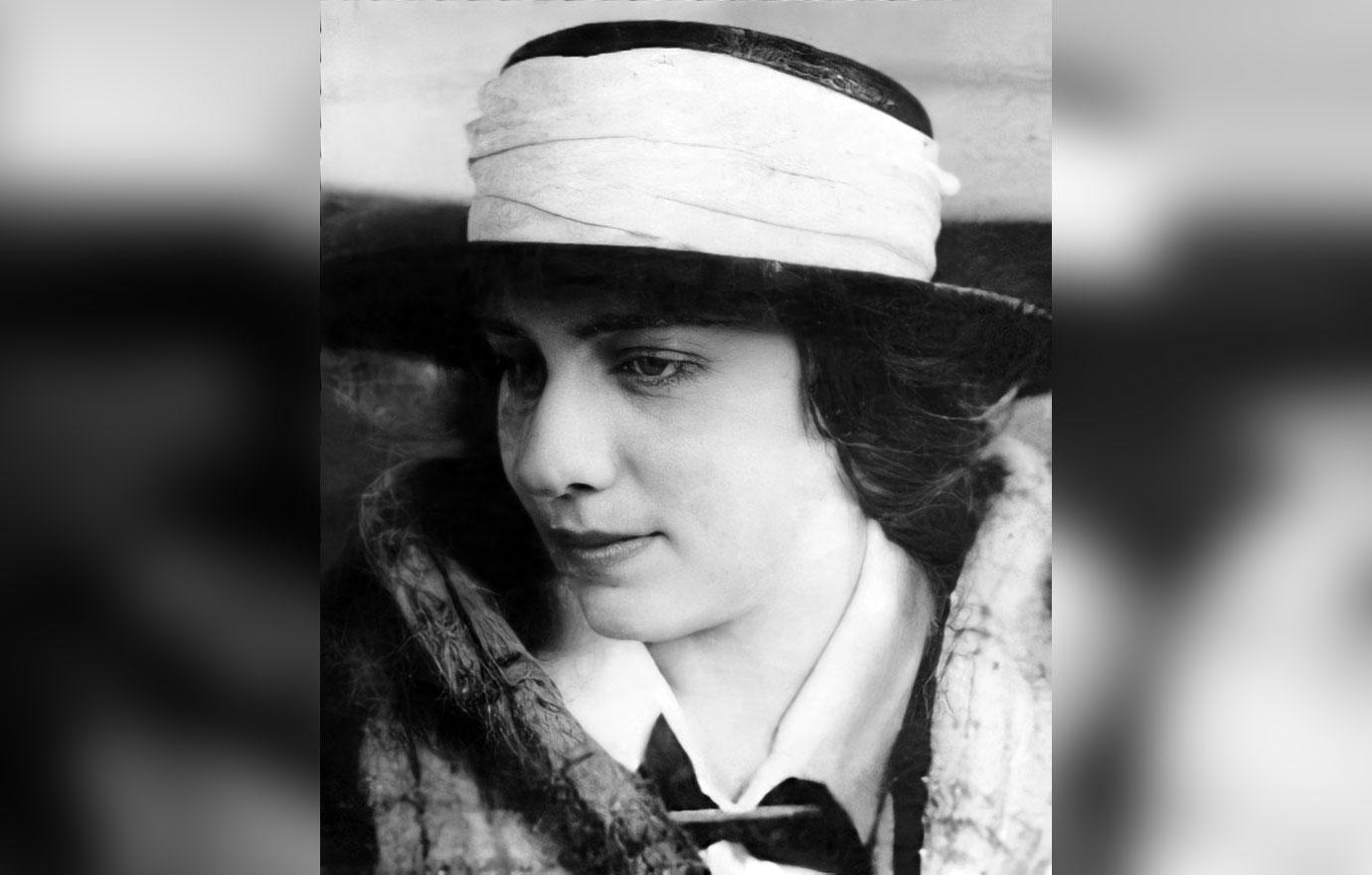
Emily Anderson and her new fiancé Victor von Schlegel sat across from Elwell and Krauss - von Schagel's ex - at the Ritz Carlton.
However, both spots were popular in such circles, and this wasn't automatically suspicious. Yet, it seems possible that a vindictive von Schlegel may have wished to show-off his attractive new fiancé to his ex-wife. While no trouble was noted at the Ritz Carlton, witnesses describe some altercation at the New Amsterdam Theatre.
It seems that this disturbance was the subject of Viola Kraus' call at 2:30am, though she dismissed it as a triviality. Discounting the allegations of an argument, Elwell was said to have been in high spirits.
Despite being ruled out as a suspect in the killing, Marie Larsen was found to have covered up evidence for Viola Kraus, likely to protect her reputation. While doctors treated her master in the living room, the housekeeper had hidden a pink silk robe, boudoir cap, and slippers that she had left on one of her dalliances with Elwell.
Larsen then phoned Kraus to assure her of the shooting and that the items had been hidden. Elwell's last flame was named only as "Miss Wilson" in the press and managed to prove she hadn't been in the house at the time of the killing.
None of the women found on Elwell's lists were deemed viable suspects, and the manner of the killing led police to favor that the killer was a male in any case. Not only was the .45 Colt a hefty weapon for a woman to wield, had one of his love interests been in the property, Elwell would never have been seen without his wig and false teeth.
Indeed, he was unlikely to have been seen in this fashion by anyone except those he knew very well. His mail being open in the room suggests he felt comfortable with potentially private affairs being shown in the person's presence.
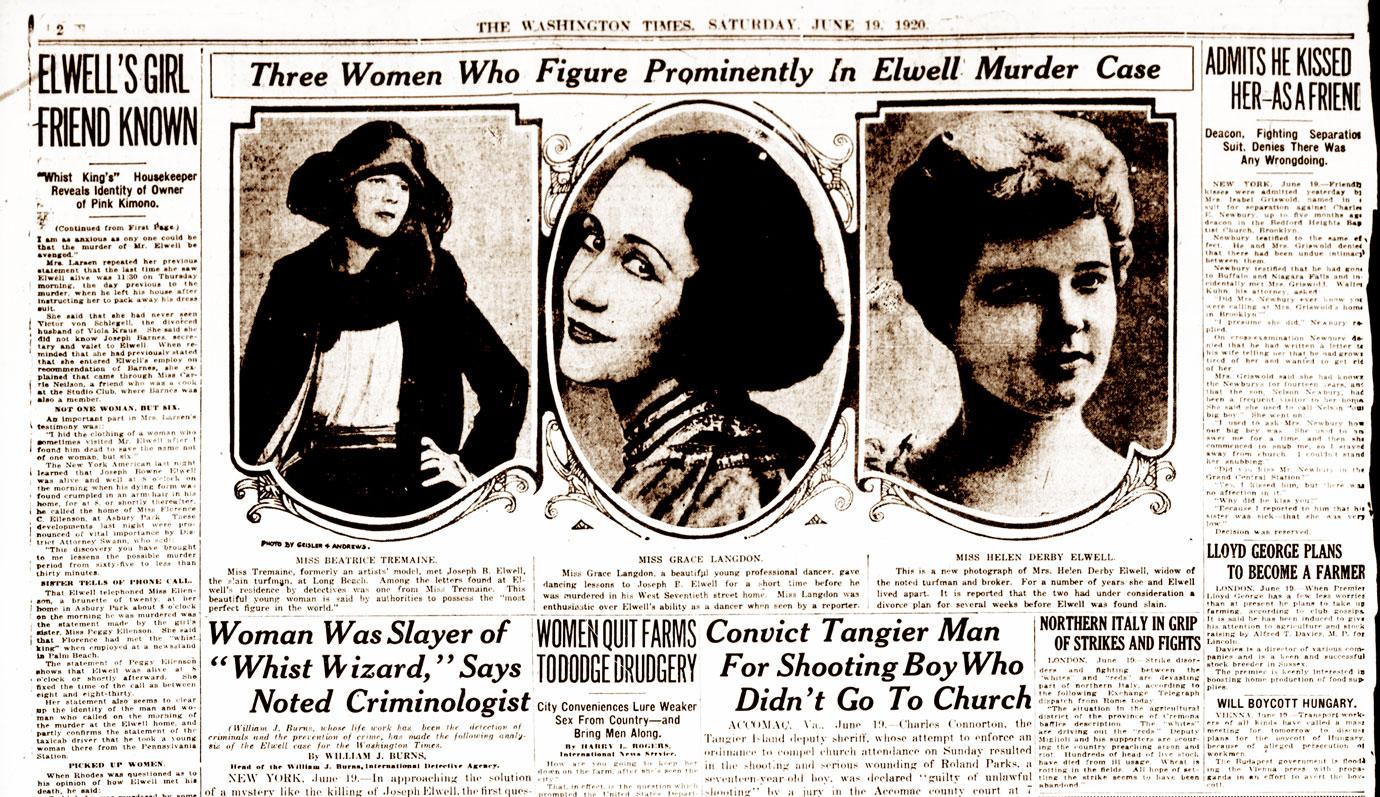
Elwell was a known womanizer but none of this paramours were named as suspects in his murder.
Bringing up nothing on the theory that Elwell's sex life had brought about his end, the NYPD desperately scoured his dealings and associations in horse racing, bridge, and the stock market, again finding nothing that may have led to his demise.
He owed no significant money, had made few errors of judgment outside his relationships, and there was seemingly no threats made against him. The case went nowhere.
As a footnote, in April of 1921, less than a year after the well-publicized killing, a man came forward to claim that he had been the one to shoot J.B. Elwell back in 1920. Police extensively questioned the individual and found that he was seriously mentally ill and had never even met Elwell.
The self-proclaimed suspect was hoping to secure the death penalty for himself so that he wouldn't be a burden to his family. The testimony was dismissed.
With all the hallmarks of a classic whodunnit, the murder of Joseph Elwell would be an inspiration for decades of crime writers. It would be the explicit basis for Willard Huntington Wright's first Philo Vance novel, The Benson Murder Case, published in 1926; some believe that the public persona of J.B. Elwell was the inspiration behind F. Scott Fitzgerald's character Jay Gatsby.
While many detective novels that feature these classic "impossible" murders would see the hero would pull off a fantastic piece of deduction, gather the suspects, and expose the killer in the final chapter, sadly, this was real life. Nobody would ever be charged with the crime, and the killing remains unsolved to this very day. Amateur sleuths have since proposed many intriguing theories that range from a moment of insane rage from Walter Lewisohn to a suicide covered up by Marie Larsen, yet none satisfy all the facts.
Once the subject of so much society gossip and scandal, Elwell would fade into the pages of history and fiction, his killing unsolved and truly remaining an "impossible crime."
Become a Front Page Detective
Sign up to receive breaking
Front Page Detectives
news and exclusive investigations.
